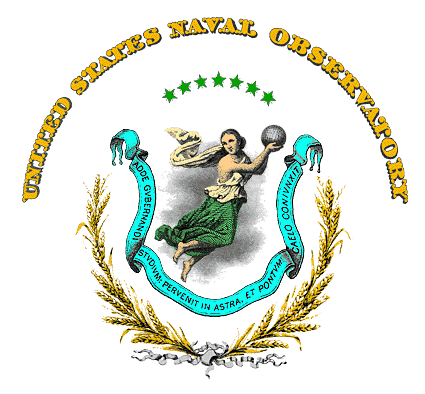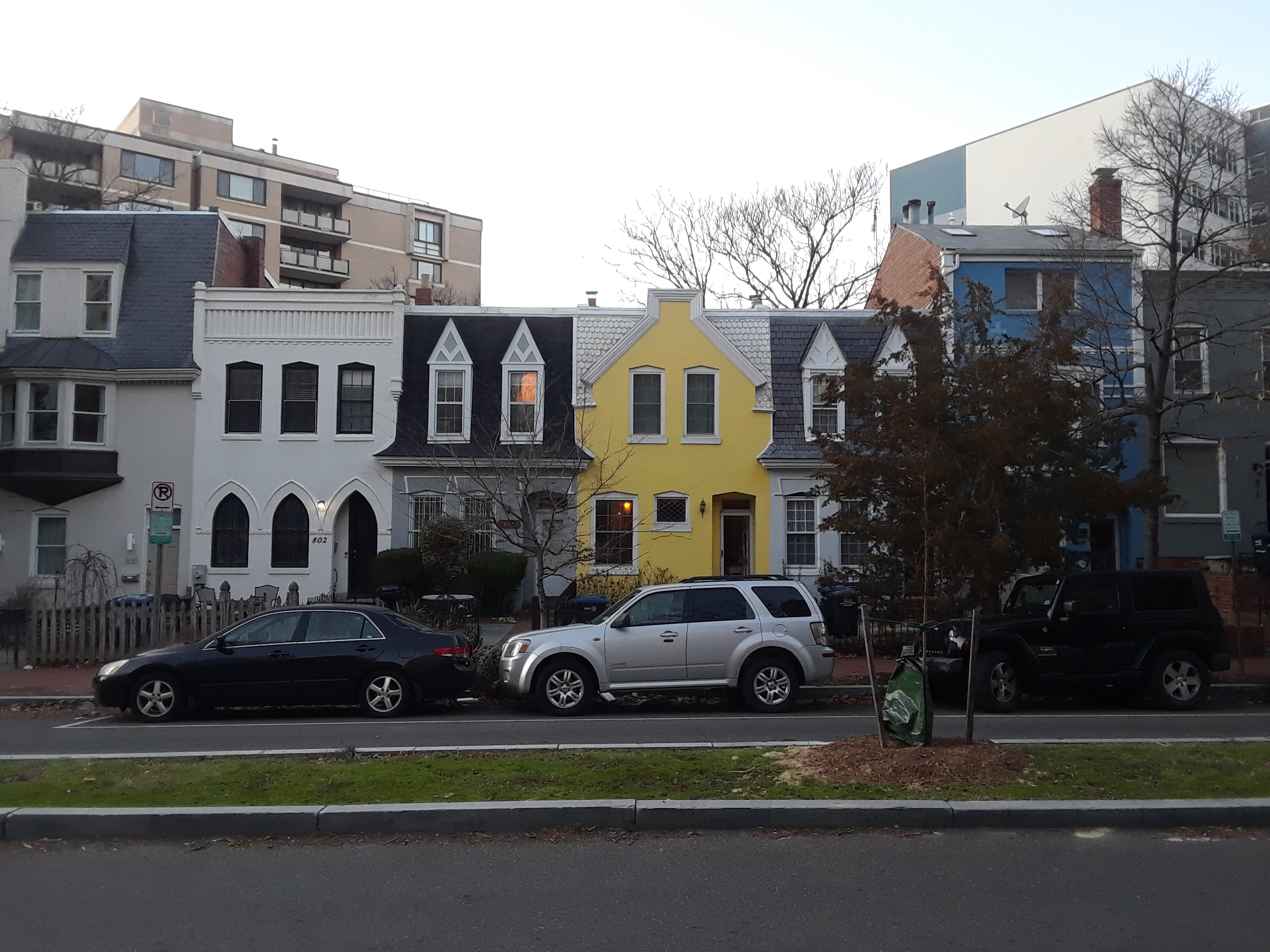|
Washington Mean Time
Washington Mean Time was the time at the meridian through the center of the old dome atop the main building at the old US Naval Observatory at Washington, D.C. This Washington meridian was defined on 28 September 1850 by the United States Congress. The Old Naval Observatory is now on the grounds of the United States Navy Bureau of Medicine and Surgery, southwest of the corner of E and 23rd Streets in Foggy Bottom (north of the Lincoln Memorial). Washington Mean Time was sometimes called Washington Meridian Time. It was never used as the basis of any time zone, although it was the local mean time of the city of Washington before the advent of American time zones on 18 November 1883. It was also used to time astronomical events by users of the ''American Ephemeris and Nautical Almanac'', first published for the year 1855. In 1897, well after the Old Naval Observatory closed in 1892, the Coast and Geodetic Survey reported that its meridian was 77°3′2.3″ west of Greenwich, which w ... [...More Info...] [...Related Items...] OR: [Wikipedia] [Google] [Baidu] |
US Naval Observatory
United States Naval Observatory (USNO) is a scientific and military facility that produces geopositioning, navigation and timekeeping data for the United States Navy and the United States Department of Defense. Established in 1830 as the Depot of Charts and Instruments, it is one of the oldest scientific agencies in the United States, and remains the country's leading authority for astronomical and timing data for all purposes. The observatory is located in Northwest Washington, D.C. at the northwestern end of Embassy Row. It is among the few pre-20th century astronomical observatories located in an urban area; initially located in Foggy Bottom near the city's center, it was relocated to its current location in 1893 to escape light pollution. The USNO has conducted significant scientific studies throughout its history, including measuring the speed of light, observing solar eclipses, and discovering the moons of Mars. Its achievements including providing data for the first ra ... [...More Info...] [...Related Items...] OR: [Wikipedia] [Google] [Baidu] |
Washington, D
Washington commonly refers to: * Washington (state), United States * Washington, D.C., the capital of the United States ** A metonym for the federal government of the United States ** Washington metropolitan area, the metropolitan area centered on Washington, D.C. * George Washington (1732–1799), the first president of the United States Washington may also refer to: Places England * Washington, Tyne and Wear, a town in the City of Sunderland metropolitan borough ** Washington Old Hall, ancestral home of the family of George Washington * Washington, West Sussex, a village and civil parish Greenland * Cape Washington, Greenland * Washington Land Philippines *New Washington, Aklan, a municipality *Washington, a barangay in Catarman, Northern Samar *Washington, a barangay in Escalante, Negros Occidental *Washington, a barangay in San Jacinto, Masbate *Washington, a barangay in Surigao City United States * Washington, Wisconsin (other) * Fort Washington (other) ... [...More Info...] [...Related Items...] OR: [Wikipedia] [Google] [Baidu] |
Washington Meridian
The Washington meridians are four meridians that were used as prime meridians in the United States and pass through Washington, D.C. The four which have been specified are: # through the Capitol # through the White House # through the old Naval Observatory # through the new Naval Observatory. Their longitudes may be reported in three ways: # relative to the local vertical used by astronomic observations # relative to NAD 27 ( North American Datum 1927), an ellipsoid of revolution that is at mean sea level beneath triangulation station Meades Ranch, Kansas (not Earth-centered); # relative to NAD 83, an Earth-centered ellipsoid of revolution with dimensions chosen to best fit the undulating (±100 m) geoid (world-wide mean sea level). NAD83 longitude of the Capitol is about 1.1 arc seconds less than its NAD27 longitude; astronomic longitude there is about 4 arc seconds less than NAD83. Capitol meridian Pierre (Peter) Charles L'Enfant specified the first meridian in his 1791 "' ... [...More Info...] [...Related Items...] OR: [Wikipedia] [Google] [Baidu] |
United States Congress
The United States Congress is the legislature of the federal government of the United States. It is bicameral, composed of a lower body, the House of Representatives, and an upper body, the Senate. It meets in the U.S. Capitol in Washington, D.C. Senators and representatives are chosen through direct election, though vacancies in the Senate may be filled by a governor's appointment. Congress has 535 voting members: 100 senators and 435 representatives. The U.S. vice president has a vote in the Senate only when senators are evenly divided. The House of Representatives has six non-voting members. The sitting of a Congress is for a two-year term, at present, beginning every other January. Elections are held every even-numbered year on Election Day. The members of the House of Representatives are elected for the two-year term of a Congress. The Reapportionment Act of 1929 establishes that there be 435 representatives and the Uniform Congressional Redistricting Act requires ... [...More Info...] [...Related Items...] OR: [Wikipedia] [Google] [Baidu] |
Foggy Bottom
Foggy Bottom is one of the oldest late 18th- and 19th-century neighborhoods in Washington, D.C., located west of the White House and downtown Washington, in the Northwest quadrant. It is bounded roughly by 17th Street NW to the east, Rock Creek Parkway to the west, Constitution Avenue NW to the south, and Pennsylvania Avenue NW to the north. Foggy Bottom is thought to have received its name due to an atmospheric quirk of its low lying, marshy riverside location, which made it susceptible to concentrations of fog, and later, industrial smoke. The United States Department of State gained the metonym "Foggy Bottom" when it moved its headquarters to the nearby Harry S Truman Building, originally planned and constructed to be the new United States Department of War headquarters building, from the State, War, and Navy Building (now known as the Eisenhower Executive Office Building) near the White House in 1947.Alex Carmine. (2009.) ''Dan Brown's The Lost Symbol: The Ultimate Una ... [...More Info...] [...Related Items...] OR: [Wikipedia] [Google] [Baidu] |
Lincoln Memorial
The Lincoln Memorial is a U.S. national memorial built to honor the 16th president of the United States, Abraham Lincoln. It is on the western end of the National Mall in Washington, D.C., across from the Washington Monument, and is in the form of a neoclassical temple. The memorial's architect was Henry Bacon. The designer of the memorial interior's large central statue, ''Abraham Lincoln'' (1920), was Daniel Chester French; the Lincoln statue was carved by the Piccirilli brothers. The painter of the interior murals was Jules Guerin, and the epitaph above the statue was written by Royal Cortissoz. Dedicated in May 1922, it is one of several memorials built to honor an American president. It has always been a major tourist attraction and since the 1930s has sometimes been a symbolic center focused on race relations. The building is in the form of a Greek Doric temple and contains a large seated sculpture of Abraham Lincoln and inscriptions of two well-known speeches by L ... [...More Info...] [...Related Items...] OR: [Wikipedia] [Google] [Baidu] |
Local Mean Time
Local mean time (LMT) is a form of solar time that corrects the variations of Solar time#Apparent solar time, local apparent time, forming a uniform time scale at a specific longitude. This measurement of time was used for everyday use during the 19th century before time zones were introduced beginning in the late 19th century; it still has some uses in astronomy and navigation. Past use Local mean time was used from the early 19th century, when local solar time or sundial time was last used until standard time was adopted on various dates in the several countries. Each town or city kept its own Meridian (geography), meridian. This led to a situation where locations one degree of longitude apart had times four minutes apart. This became a problem in the mid 19th century when railways needed clocks that were synchronized between stations, at the same time as people needed to match their clock (or the church clock) to the time tables. Standard time means that the same time is used ... [...More Info...] [...Related Items...] OR: [Wikipedia] [Google] [Baidu] |
American Ephemeris And Nautical Almanac
''The American Ephemeris and Nautical Almanac'' was published for the years 1855 to 1980, containing information necessary for astronomers, surveyors, and navigators. It was based on the original British publication, '' The Nautical Almanac and Astronomical Ephemeris'', with which it merged to form ''The Astronomical Almanac'', published from the year 1981 to the present. History Authorized by Congress in 1849, the American Nautical Almanac Office was founded and attached to the Department of the Navy with Charles Henry Davis as the first superintendent. The ''American Ephemeris and Nautical Almanac'' was first published in 1852, containing data for the year 1855. Its data was originally calculated by human "computers", such as Chauncey Wright and Joseph Winlock. Between 1855 and 1881 it had two parts, the first for the meridian of Greenwich contained data on the Sun, Moon, lunar distances, Venus, Mars, Jupiter, and Saturn, which was published separately as ''The American Nauti ... [...More Info...] [...Related Items...] OR: [Wikipedia] [Google] [Baidu] |
Universal Time
Universal Time (UT or UT1) is a time standard based on Earth's rotation. While originally it was mean solar time at 0° longitude, precise measurements of the Sun are difficult. Therefore, UT1 is computed from a measure of the Earth's angle with respect to the International Celestial Reference Frame (ICRF), called the Earth Rotation Angle (ERA, which serves as a modern replacement for Greenwich Mean Sidereal Time). UT1 is the same everywhere on Earth. UT1 is required to follow the relationship :ERA = 2π(0.7790572732640 + 1.00273781191135448'' · Tu'') radians where ''Tu'' = ( Julian UT1 date - 2451545.0). History Prior to the introduction of standard time, each municipality throughout the clock-using world set its official clock, if it had one, according to the local position of the Sun (see solar time). This served adequately until the introduction of rail travel in Britain, which made it possible to travel fast enough over long distances to require continuous ... [...More Info...] [...Related Items...] OR: [Wikipedia] [Google] [Baidu] |
Time Zones
Time is the continued sequence of existence and events that occurs in an apparently irreversible succession from the past, through the present, into the future. It is a component quantity of various measurements used to sequence events, to compare the duration of events or the intervals between them, and to quantify rates of change of quantities in material reality or in the conscious experience. Time is often referred to as a fourth dimension, along with three spatial dimensions. Time has long been an important subject of study in religion, philosophy, and science, but defining it in a manner applicable to all fields without circularity has consistently eluded scholars. Nevertheless, diverse fields such as business, industry, sports, the sciences, and the performing arts all incorporate some notion of time into their respective measuring systems. 108 pages. Time in physics is operationally defined as "what a clock reads". The physical nature of time is addre ... [...More Info...] [...Related Items...] OR: [Wikipedia] [Google] [Baidu] |






